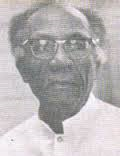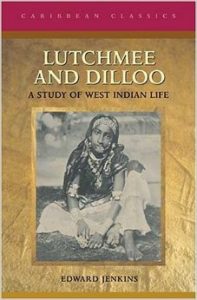Love in the Time of Bondage
WE are still unearthing material (printed and otherwise) in respect to some of the evils that transpired during the days of slavery/indenture, episodes that were better left unwritten by the first chroniclers of our history.
While hard facts on and about those two periods are slow in surfacing, many of our imaginative writers have taken liberty to reconstruct, oftentimes romanticising the past.

Here are two examples by writers that speak to the humanity of people in bondage. The first is a novel, ‘Lutchmee and Dilloo: A Study of West Indian Life’ by Edward Jenkins and the second is a long poem by Norman Cameron titled ‘The African Prince’ with a subtitle ‘a slave romance’.
* ‘Lutchmee and Dilloo: A Study of West Indian Life’ by Edward Jenkins
The novel, ‘Lutchme and Dilloo’, by Jenkins, published in 1877, traces indentureship from India to Guyana mainly through three characters, all born in India, later transported to Guyana. It is a tragic love triangle story among Dilloo, his wife Lutchmee and Hunoomaun played out against the planning of an armed rebellion by the indentured labourers. In the end, Dilloo thrashed Hanoomaun in a stick fight where the latter succumbed to his injuries. Later Dilloo also died, in the arms of Lutchmee.
‘Lutchmee and Dilloo’ is the earliest novel on Indo-Guyanese life and it was the first time that ‘the coolie was a subject worthy of literature’.
* ‘The African Prince – a slave romance’ by Norman Cameron
The long poem, ‘The African Prince’, was written by Cameron between 1926 and 1934.
This is first verse of the poem runs:
This tale goes back to far off days
Which none would wish to see,
But that there were some sunny rays
Let this a sample be:-
And the story goes like this: Peter was a prince in his land of birth, Africa, and the pride of his ‘parents’ boast’ until he was transported to Jamaica ‘a slave – yet not a slave…bent on being free’.
There were many reasons for Peter to flee but ‘Twas pretty blue-eyed Missy Rose/Who bound him to the estate’. Rose was the daughter of the estate owner. It happened that Rose took to teaching Peter to read and in turn he taught her ‘the Arabs written speech’. Eventually they took a liking to each other but realized that such a position was untenable. Peter in his magnanimity decided to run away, leaving Rose to a normal life. Rose did not buy his reason so they eloped. 
The poem then describes their flight and the pursuit by the girl’s father leading a pack of blood hounds – the fiercest pack in the land. But Missy Rose who knew the lead hound was able to subdue the pack and to talk to her father, defending her action and to defend Peter. The upshot was the father accepted the situation, offering his blessing to the union of the enslaved Peter and his daughter Rose. And thus ended ‘a sample’ of one of the ‘sunny rays’ of slavery.
The history of slavery/indenture is replete with stories, good, bad and indifferent. And our scholars and creative writers will reconstruct those stories for us as time goes by and sooner rather than later as more leads become evident. But for now, the above stories must be read as love in the time of bondage.
Responses to this author telephone (592) 226-0065 or email: oraltradition2002@yahoo.com
(by Petamber Persaud)



.jpg)








